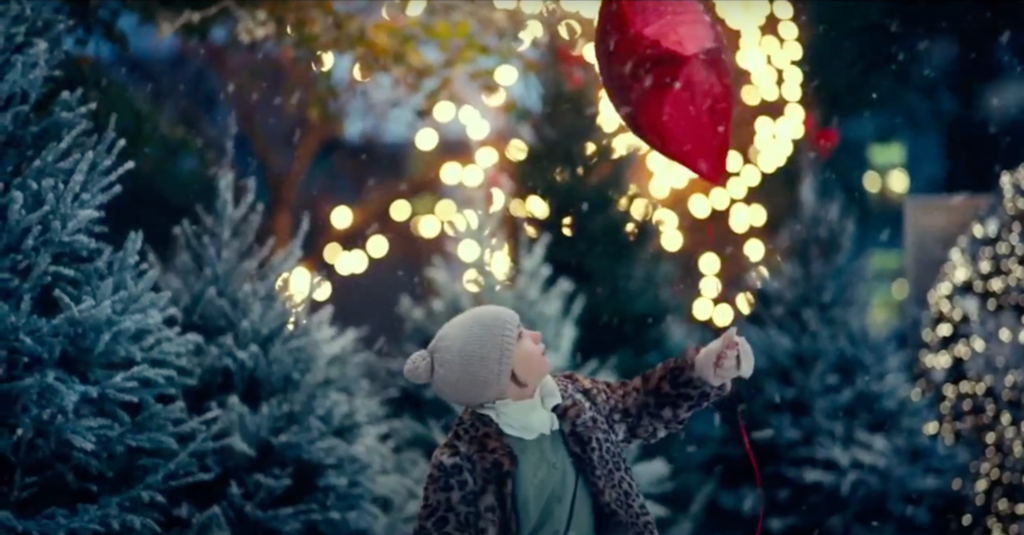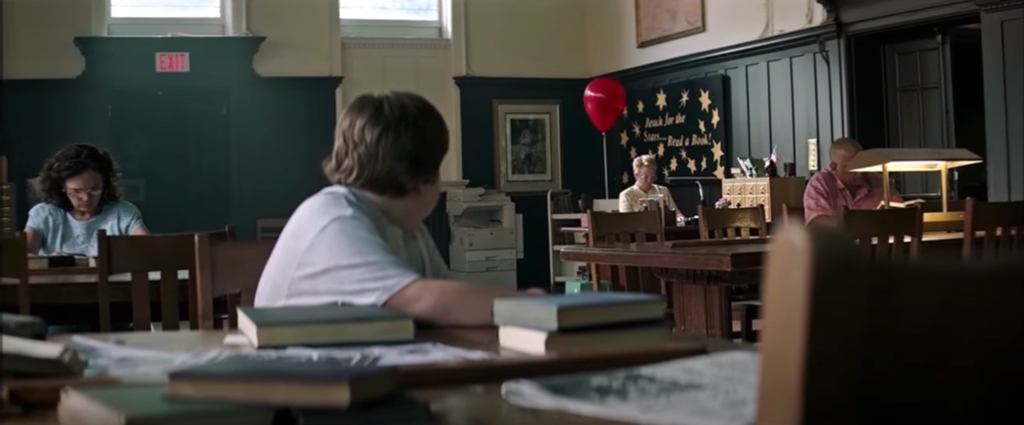The red balloon has found its way into films of different styles, genres, and eras. It is an image that evokes feelings of hope, imagination, and childlike wonder. Innocent and free from concern, it has been notably present ever since Albert Lamorisse’s The Red Balloon (1956), in which a young Parisian boy finds and befriends a sentient balloon. Royce Marcus addresses the symbolism in the film: “The balloon as well as the children embody all that is pure and free; while the suburbs and the adults represent the harshness of reality, the prison and authority of the everyday – that which limits freedom and creativity” (15). The balloon is a fantastical yet simple symbol that is inevitably opposed by the realism of the world around it. The image has reappeared several times in varying degrees of relevance. It appears in major roles, such as in It (2017), or simple moments that pass by in a moment’s notice, such as Tag (2018) or Wonder Woman 1984 (2020). Despite the obvious differences between these films, the balloon’s role remains the same: to remind the characters and the audience of the profound impact that hope, wonder, and imagination has had on all children.
The red balloon’s thematic value translates to Tag, a true-story comedy that follows a group of friends that have been playing the same game of tag for the last thirty years. One of the underlying themes of the film is how the game has allowed for these people to maintain close relationships that have lasted since childhood. The red balloon appears when Jeremy Renner’s character, Jerry, is descending an escalator in a mall. It floats left to right across Jerry, who grabs it and hands it to its owner, a nearby child. They have a short exchange in which Jerry provides some short comedic advice and quickly moves on. It is a small moment that could easily be overlooked; but given the film’s overt theme of the value of maintaining childhood spirit, it feels entirely intentional. The balloon’s appearance, although brief, is an homage to childhood and the recapturing of fleeting innocence.
Another example of the balloon’s appearance comes in at the ending to Wonder Woman 1984. Much of the film is spent trying to stop Pedro Pascal’s character, Max Lord, from harnessing the powers of the Dream Stone, a magical rock that grants the wishes of whoever possesses it. This is another film with overt childhood themes. When Max eventually loses, he realizes his biggest mistake was not appreciating the simple desire of his son to spend time with his father. At the end, Diana (Gal Gadot) looks around a street during Christmas, cherishing the sights of loved ones celebrating. She watches a child release a star-shaped red balloon into the sky, gazing as it disappears into the clouds. In a film that emphasizes the imagination and “wonder” in Wonder Woman, the symbol of the red balloon makes sense. It is a reminder to approach the world with admiration and awe, all with a childlike enthusiasm.
In It, the symbol of the red balloon is turned on its head. What symbolizes a child’s sense of imagination is manipulated to lure children to the clown, Pennywise (Bill Skarsgård). Pennywise’s most notable ability is to manifest as each of the children’s fears. Whenever the red balloon appears, it signals that Pennywise is close, if not already present. Whenever a child sees the simple image of the red balloon, it deceptively signifies the appearance of the child’s fears. There is one scene in which Ben is researching Derry’s history in the library, becoming terrified after learning about an Easter disaster, a headless child, and other mysterious phenomenon. Quickly after he sees a red balloon float past him down a hall. Following the balloon, he finds a series of painted eggs that lead him to a basement where Pennywise chases him in the form of a headless child. By embracing the visual of the red balloon, the exploration of deep-seated fear in It is imagined in relationship to the most optimistic of childhood images.
In recent years, the red balloon has become reimagined in film. Whether in a brief moment of innocence or as a deceiving symbol of horror, it is a motif made most impactful by its simplicity. Its image evokes childlike naivety and expresses the value of childhood. The world can be complicated, dull, or scary, but the red balloon, floating brightly and effortlessly, produces a comforting nostalgia that embraces the enthusiasm of simpler times.
Author Biography
Logan Wells is an undergraduate film student at the University of North Carolina Wilmington. He is a passionate film enthusiast that regularly practices screenwriting, film analysis, and photography. He also enjoys spending time in nature and the occasional kayak trip.
Reference
Marcus, Royce. “The Art of the Frame: The Use of Framing, Montage, and Homage in The Red Balloon and The Flight of the Red Balloon.” Film Matters, vol. 2, no. 2, 2011, pp. 13–17. EBSCOhost, doi:10.1386/fm.2.2.13_1. Accessed 5 May 2021.










































